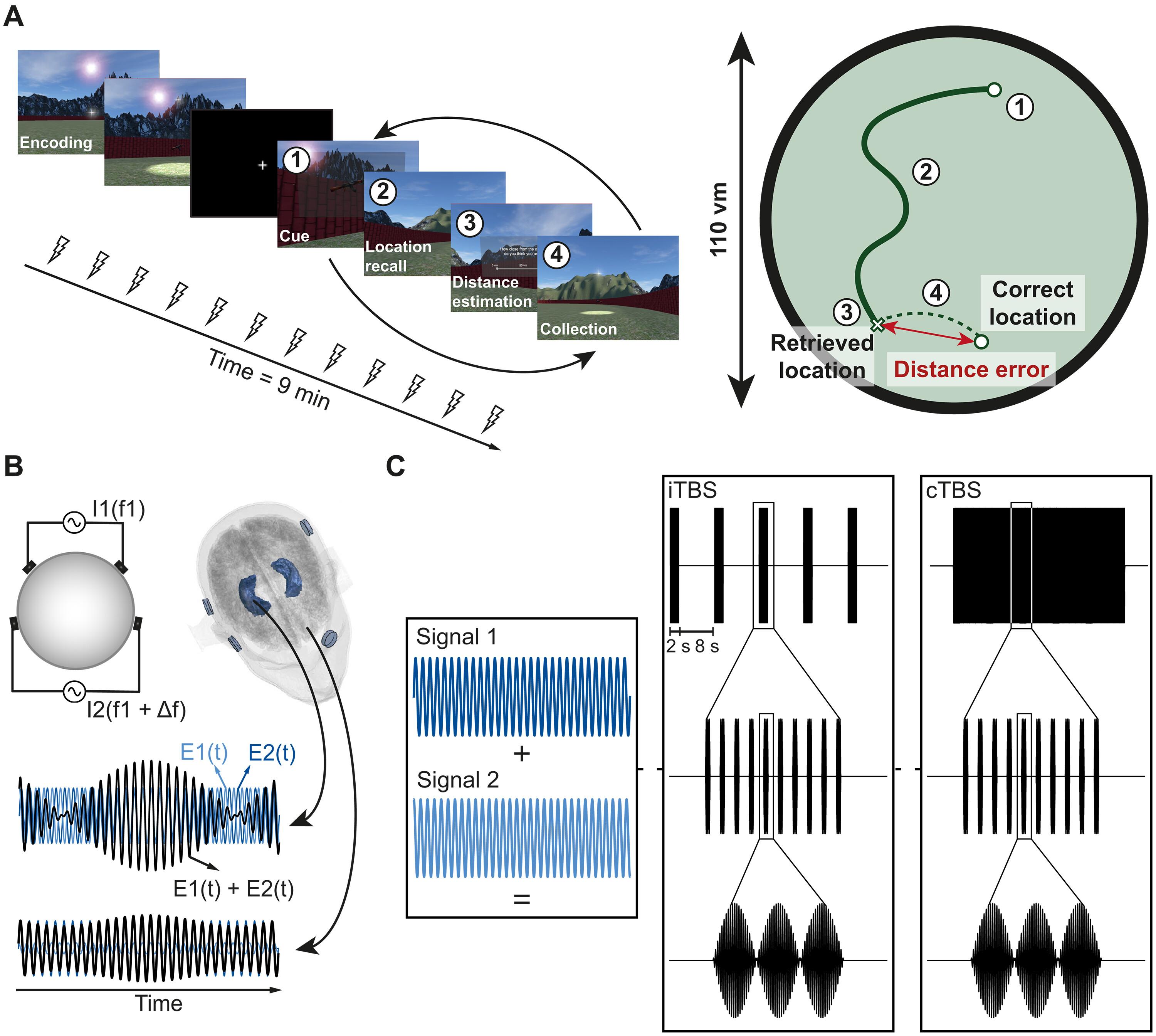在人类空间导航过程中对海马-脑室复合体的无创调节
IF 11.7
1区 综合性期刊
Q1 MULTIDISCIPLINARY SCIENCES
引用次数: 0
摘要
由于海马-脑室复合体(HC-EC)在大脑中的深度很深,因此人类对其通过神经调控在空间导航中的作用了解有限。在这里,我们的目的是利用经颅颞部干扰电刺激(tTIS)在健康志愿者身上更好地阐明这种关系,经颅颞部干扰电刺激是一种非侵入性技术,可选择性地对大脑深层结构进行神经调节。我们在基于虚拟现实的空间导航任务和同时进行的功能磁共振成像中,以连续或间歇θ-猝发刺激模式(cTBS 或 iTBS)对右侧 HC-EC 进行了经颅颞区干扰电刺激,并与对照组进行了比较。总之,这些数据证明了人类海马-脑电活动可以直接、无创地调节,从而导致空间导航行为的改变。这些发现为脑外伤或痴呆等认知障碍患者带来了希望。本文章由计算机程序翻译,如有差异,请以英文原文为准。

Noninvasive modulation of the hippocampal-entorhinal complex during spatial navigation in humans
Because of the depth of the hippocampal-entorhinal complex (HC-EC) in the brain, understanding of its role in spatial navigation via neuromodulation was limited in humans. Here, we aimed to better elucidate this relationship in healthy volunteers, using transcranial temporal interference electric stimulation (tTIS), a noninvasive technique allowing to selectively neuromodulate deep brain structures. We applied tTIS to the right HC-EC in either continuous or intermittent theta-burst stimulation patterns (cTBS or iTBS), compared to a control condition, during a virtual reality–based spatial navigation task and concomitant functional magnetic resonance imaging. iTBS improved spatial navigation performance, correlated with hippocampal activity modulation, and decreased grid cell–like activity in EC. Collectively, these data provide the evidence that human HC-EC activity can be directly and noninvasively modulated leading to changes of spatial navigation behavior. These findings suggest promising perspectives for patients suffering from cognitive impairment such as following traumatic brain injury or dementia.
求助全文
通过发布文献求助,成功后即可免费获取论文全文。
去求助
来源期刊

Science Advances
综合性期刊-综合性期刊
CiteScore
21.40
自引率
1.50%
发文量
1937
审稿时长
29 weeks
期刊介绍:
Science Advances, an open-access journal by AAAS, publishes impactful research in diverse scientific areas. It aims for fair, fast, and expert peer review, providing freely accessible research to readers. Led by distinguished scientists, the journal supports AAAS's mission by extending Science magazine's capacity to identify and promote significant advances. Evolving digital publishing technologies play a crucial role in advancing AAAS's global mission for science communication and benefitting humankind.
 求助内容:
求助内容: 应助结果提醒方式:
应助结果提醒方式:


